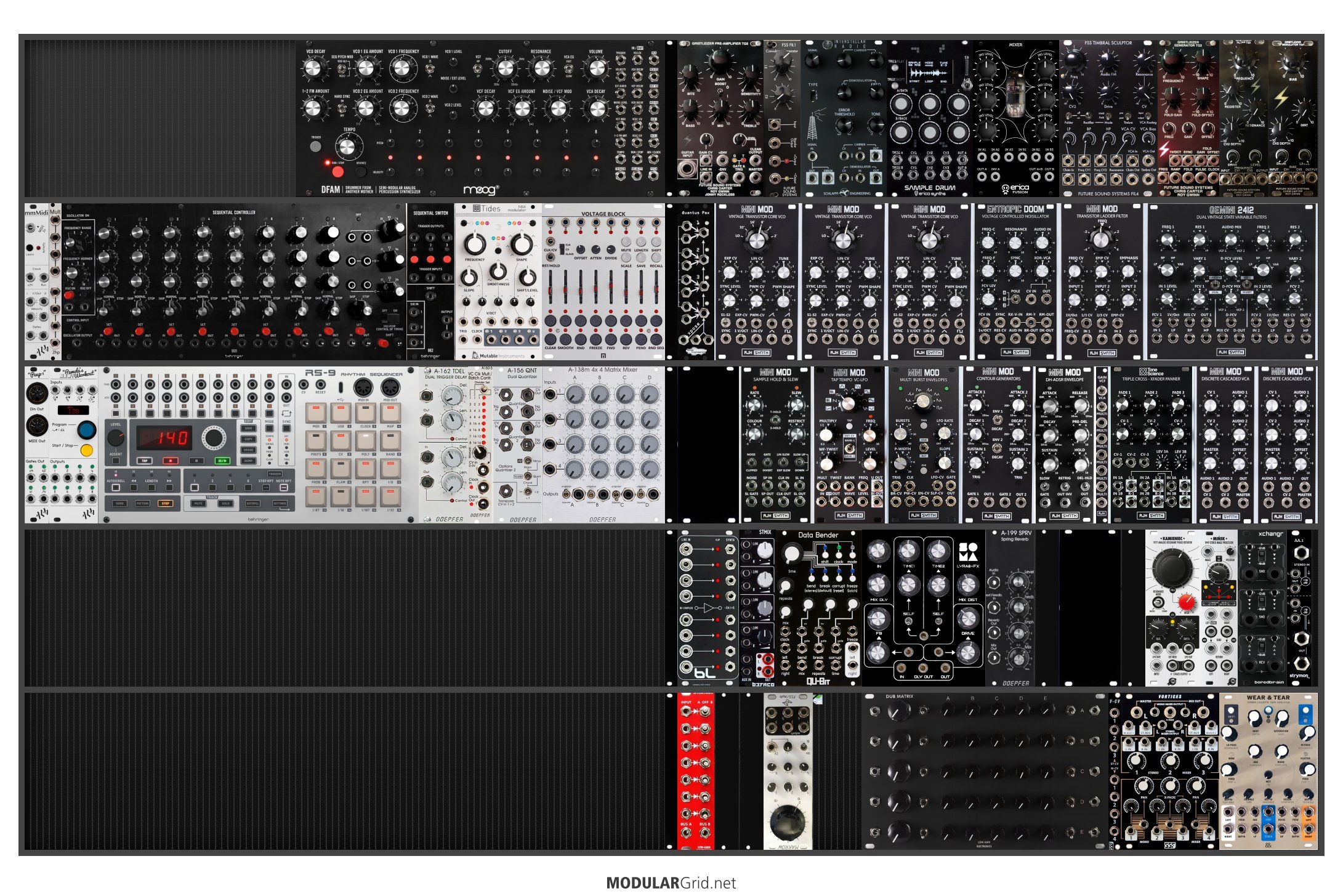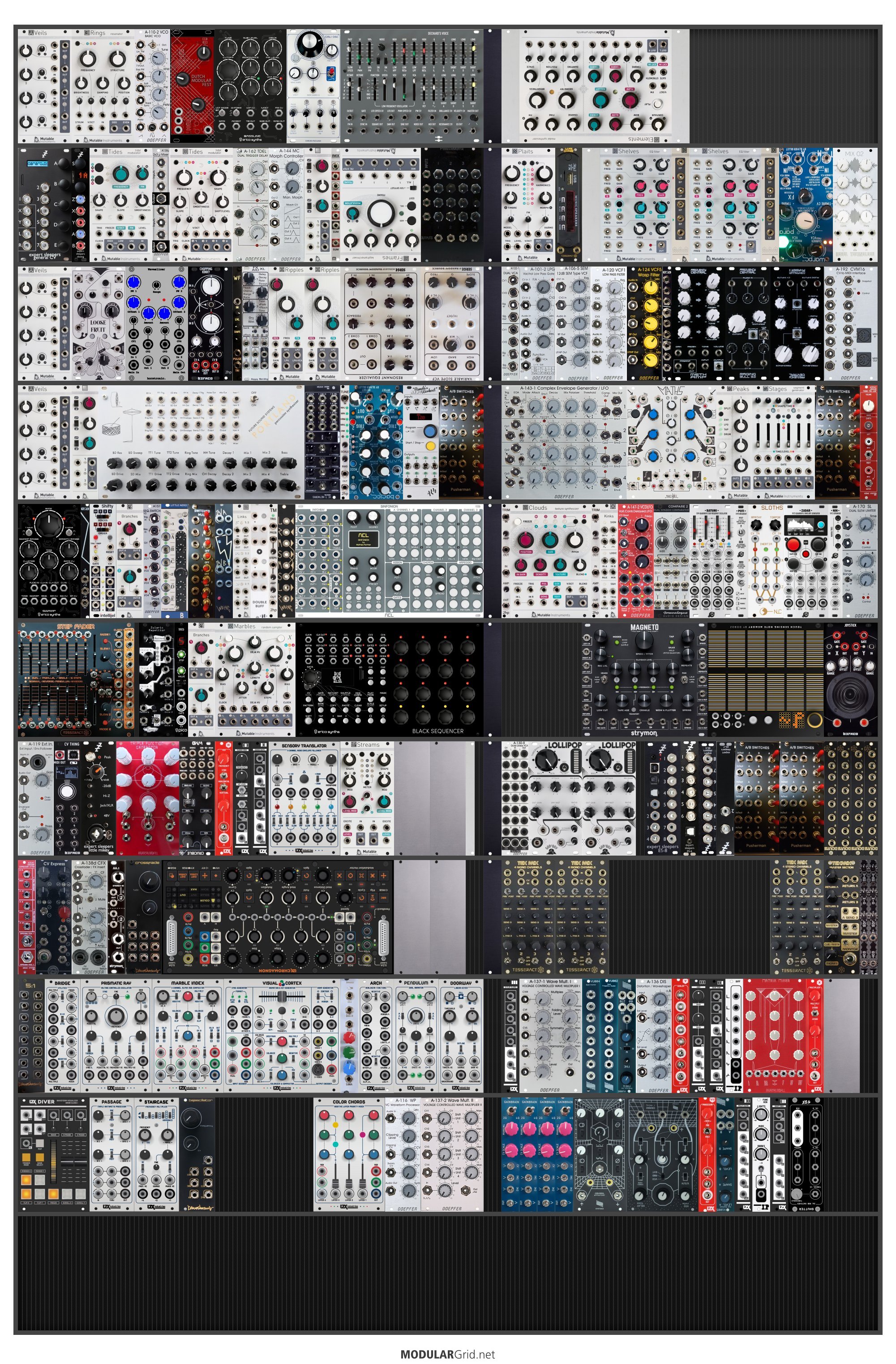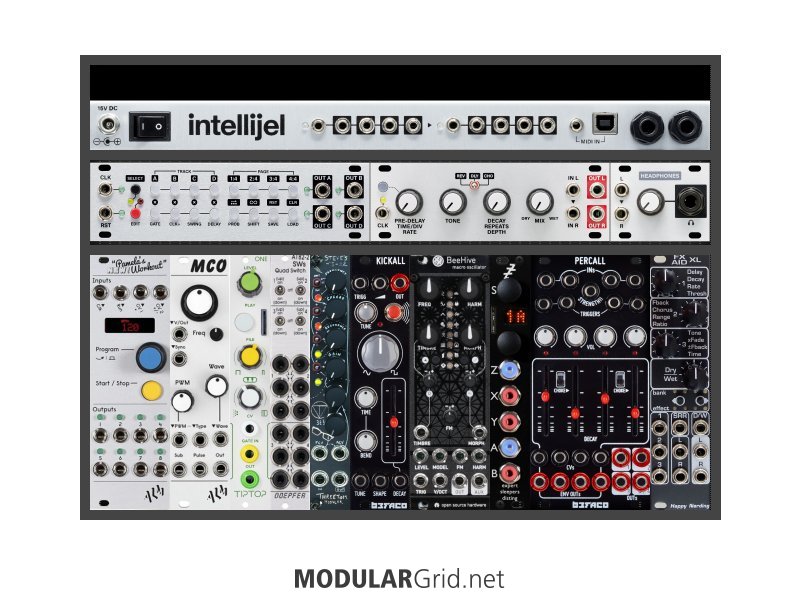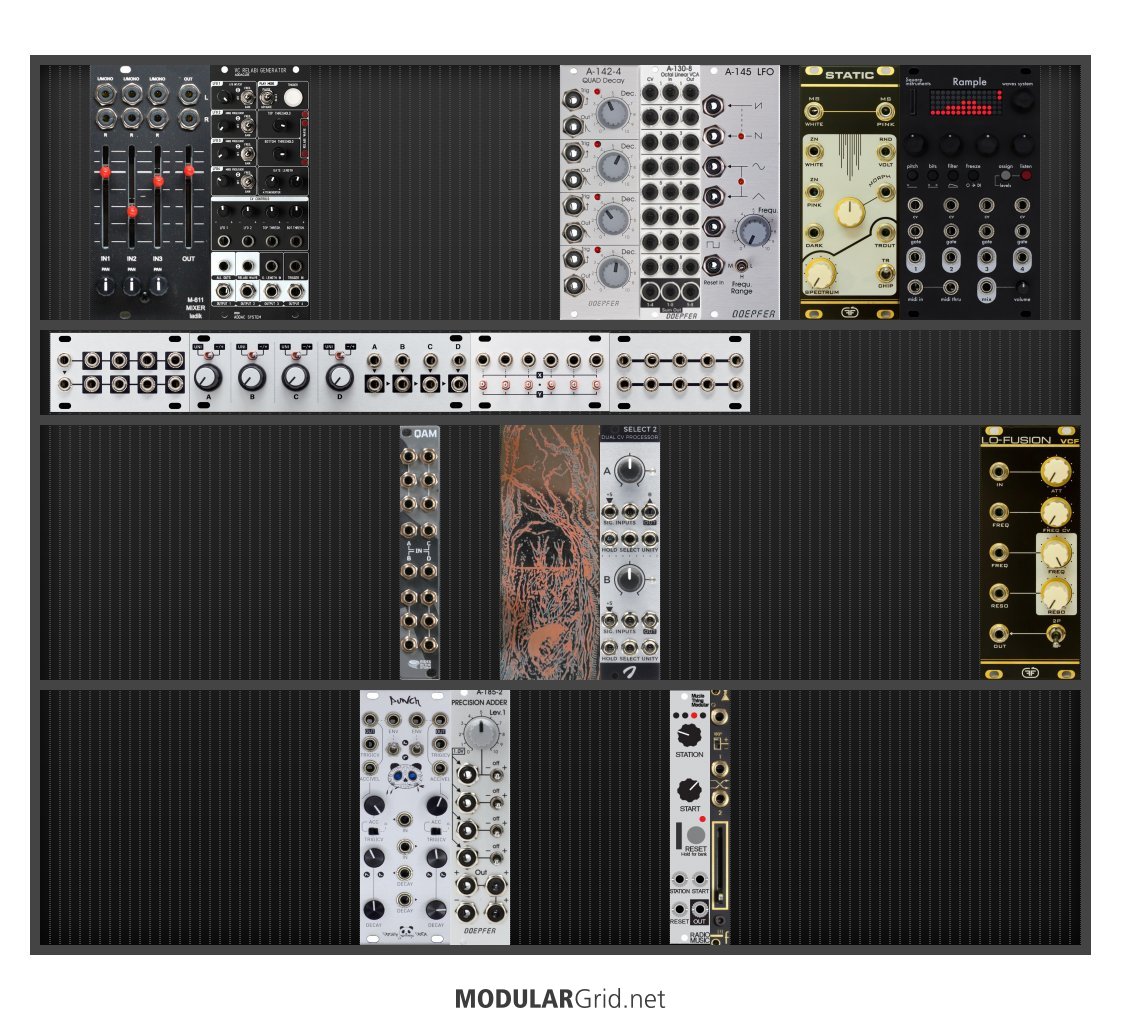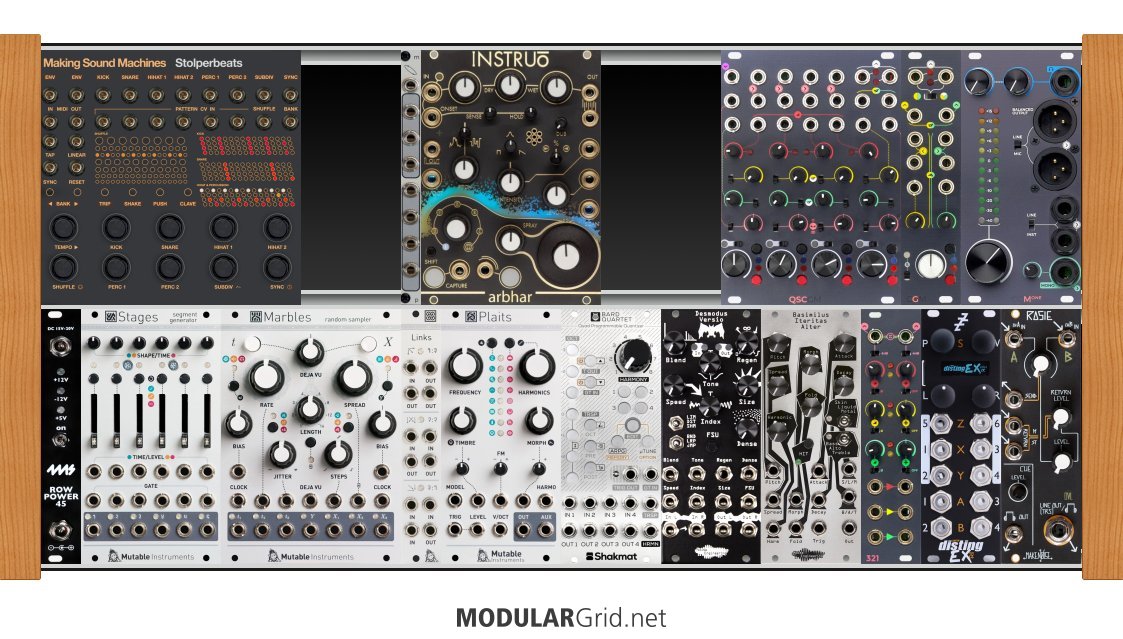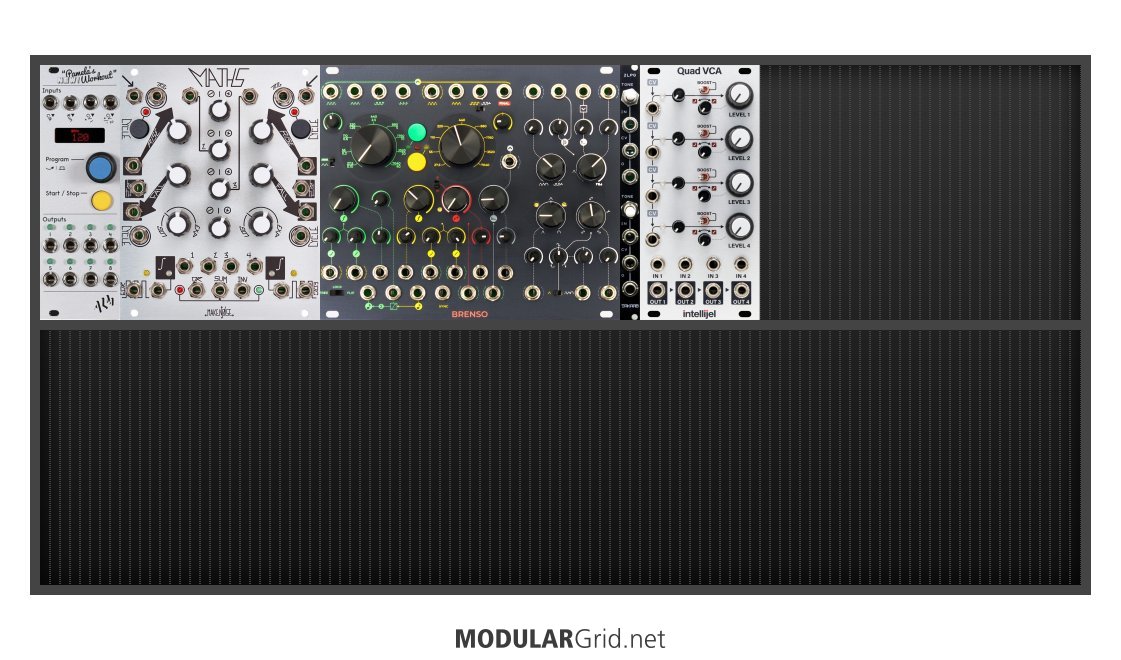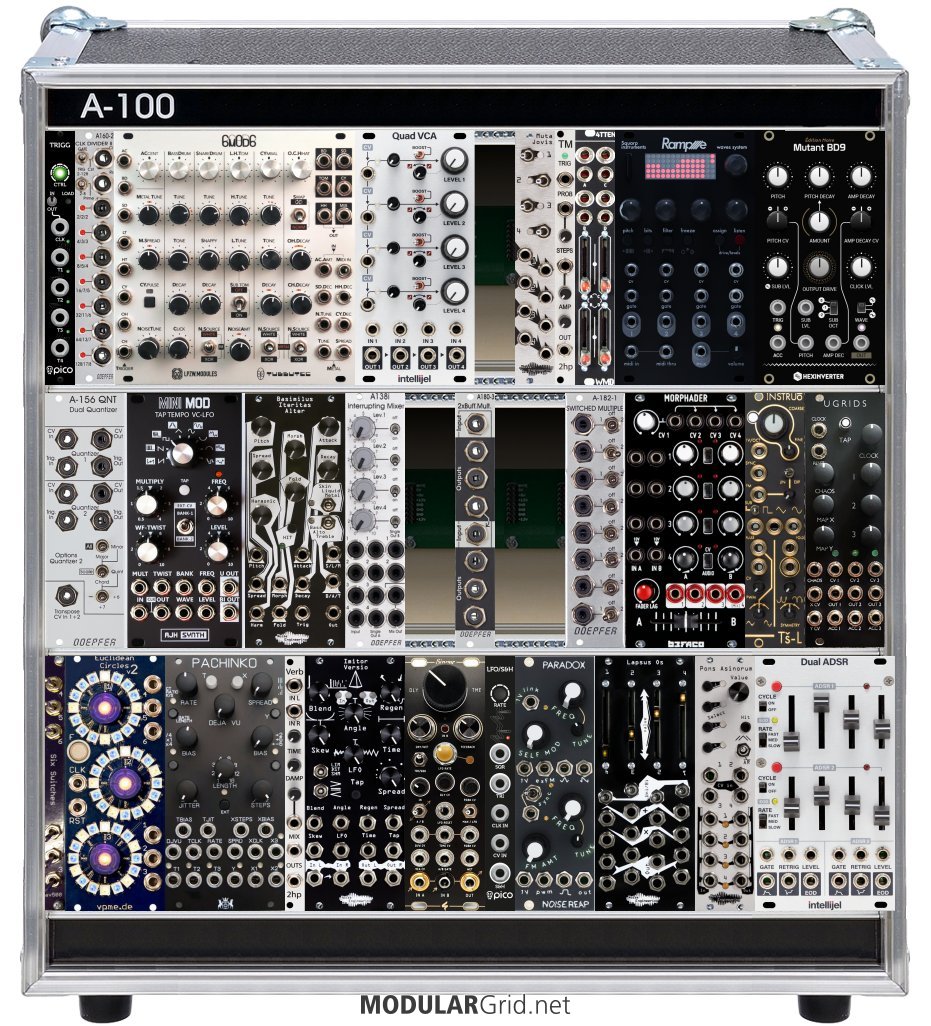Hi there,
As a guitar player who moved into modular some tips, first get the book Patch & Tweak such a great guide for beginners to modular! Next download a copy of the free software VCV Rack, it is super helpful to learn how modules and patching work.
I'm not quite sure what modules to start with. I know I need an oscillator, modulation source, sequencer and a VCA so I was thinking of Plaits, Maths, Marbles, and Intellijel''s Quad VCA
Definitely need a good sized case and power supply. I recommend 9u size at minimum and 12u if you can get that for the capable need to not exhaust space too soon. Amalgamod, Doepfer and MLDR make nice cases/power supplies.
Utilities are most important since you can get a lot of mileage with a single VCO and Filter.
You want VCAs, CV mixer, attenuators, mults, LFOs and so forth. I started with Batumi LFO, Doepfer VCO/filter, envelope generator/ADSR, and an Intellijel VCA that is great.
How would I be able to record into Ableton or perform live using a Focusrite 4i4?
Send output from mixer in modular system to an audio interface. I use a MOTU audio interface that receives output from my modular mixer and works well with my DAW and computer.
What are the best resources to get more comfortable with actually patching this rig
Download VCV Rack software on your computer and try building a modular system and patches!
The book Patch & Tweak is great as well.

